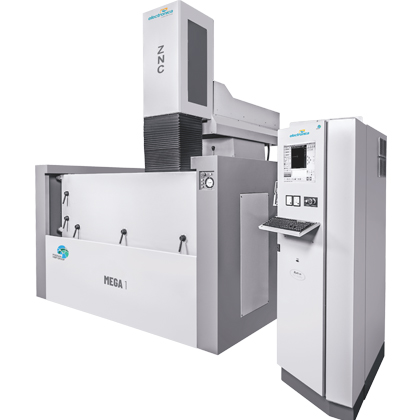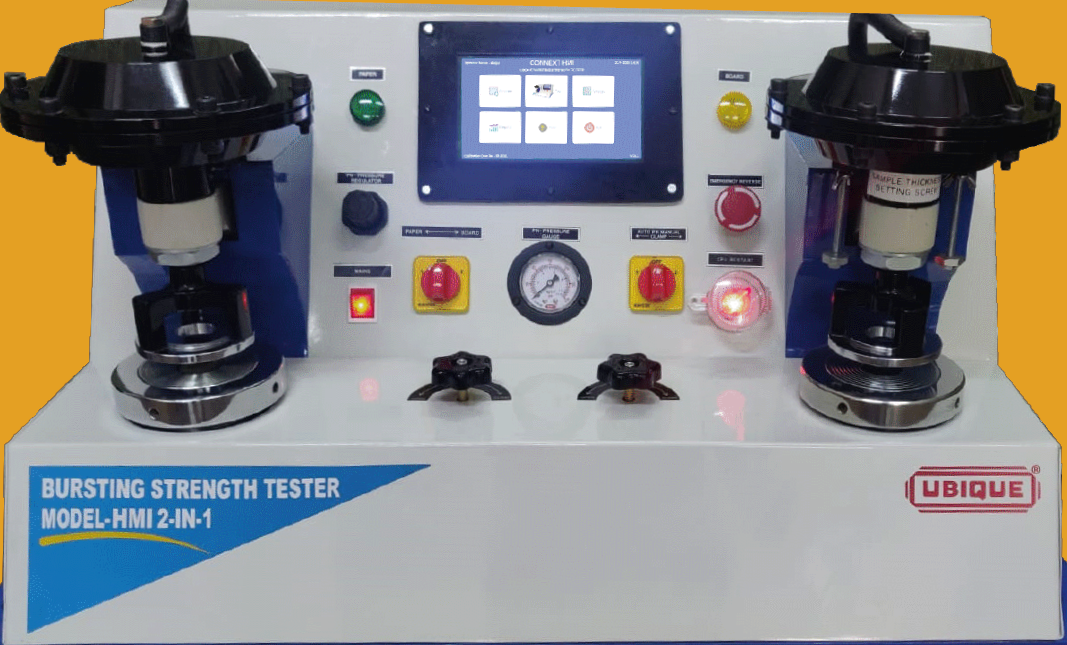Industrial Products and Machine Tools
Embedded Machine Controllers, custom HMIs, IoT Enabled Machines, Business Process Automation
Technologies

Softwise Mechatronics offers comprehensive engineering solutions for the Industrial Products, Machine Tools OEMs and Manufacturing sector, leveraging cutting-edge technology to enhance productivity and efficiency. Our expertise in this industry includes:
- Development of automation products and solutions for smart factories
- IoT integration for predictive maintenance
- Custom software for production line optimization
- End-to-end embedded system development services for Machine Tools and controllers
- PCB design and embedded programming
- Compliance with international standards (ISO, IEC, CE)
Experience

Our team's experience in industrial products and machine tools allows us to deliver innovative solutions that set successful businesses apart. We specialize in:
- Modernizing legacy testing machines to meet current industry standards
- Developing unified controllers capable of handling diverse machine inputs and outputs
- Implementing remote access for setup, diagnostics, and maintenance
- Ensuring compliance with regulations such as US FDA 21 CFR Part 11
- Creating user-friendly interfaces with real-time graphing and reporting capabilities
- Integrating solutions with ERP and Lab Management Systems (LMS)
Related Case Studies
Revolutionizing Legacy Testing Machines
IntroductionUbique BCT HMI.png 504.18 KBA prominent manufacturer of testing equipment was facing significant challenges in maintaining its competitive edge in the international market. Although their machines were built to the highest standards, they severely lacked modern electronics, data acquisition capabilities, and connectivity features. As a result, the company was losing sales, particularly in the pharmaceutical sector, to international competitors whose machines offered advanced features and full compliance with the latest US FDA regulations.The manufacturer turned to Softwise Mechatronics to modernize their entire product line, bringing it on par with the most advanced machines in the industry. We began by identifying the key issues in their current systems, benchmarking against competitors, and understanding the needs of their user base.Identifying the ProblemsWe held extensive meetings with the client's team, from senior directors to assembly line technicians. We also engaged with the marketing department, after-sales support teams, and some of their trusted customers.Challenges Faced by the ClientMany of the existing machines were either purely mechanical or had minimal digital displays.The machines lacked features such as access control, real-time graph displays, and reporting capabilities. They were also unable to connect with Lab Management Systems (LMS) or ERPs.Compliance with US FDA 21 CFR Part 11 regulations was a key requirement, particularly for their pharmaceutical customers exporting to the US. Without this compliance, customers would be forced to switch to other suppliers.The machine portfolio had varied controllers and displays, resulting in increased inventory costs.Technical issues with the machines could only be diagnosed by sending personnel to the customer site, leading to delayed service.Customer Pain PointsWhile the machines were cutting-edge when first introduced, they had become outdated in both design and functionality.The absence of user access control, real-time operation graphs, and flexible reporting options was a major drawback. Most machines were only compatible with dot-matrix printers, limiting reporting options.Customers increasingly wanted their machines to integrate with LMS or ERP systems, which the current models could not support.The machines were typically operated by blue-collar technicians, while quality managers were responsible for test setup and data interpretation. In many cases, managers working remotely or from a different location had to travel to the facility to make even minor adjustments.Our SolutionAfter thoroughly studying the entire product line, we discovered that all the machines operated on the same fundamental principle, with variations in inputs and outputs. Most machines utilized load cells or pressure sensors with strain gauges, along with additional inputs such as encoders, digital I/O, or safety interlocks. Based on this analysis, we developed the following strategy:Unified Controller: We designed a common controller capable of handling all possible inputs and outputs, with extra provisions for future developments.User Interface: The UI was built on a Linux-based SBC (Single Board Computer), providing features such as printer connectivity and integration with ERP or cloud systems. This design allowed us to use different screen sizes depending on the machine type while delivering a modern, user-friendly experience with real-time graphing and reporting capabilities.Access Control: Specific access levels were created for Operators, Managers, System Administrators, and the Client as the OEM.Remote Access for Setup and Review: A provision was made for users to log into the machine remotely within their company’s network to set up tests and review results, while actual machine operation was restricted to the local console.Remote Diagnostics: We enabled remote access for the client’s service team, allowing them to diagnose issues before dispatching personnel to the site, minimizing downtime.The ResultWe successfully developed a machine controller based on the Texas Instruments MSP432 microcontroller, paired with an Analog Devices ADC. The user interface was deployed on a Linux SBC running in kiosk mode using Node.js. The final product boasted a sleek design, best-in-class data sampling rates, real-time graphs, and all the features defined at the start of the project. The system achieved a stable accuracy of more than 0.01% of the machine’s capacity.These upgraded machines have been successfully installed at numerous pharmaceutical manufacturing plants, with many integrated into ERP or Lab Management Systems.Ubique During Development.png 234.34 KBUbique Testing.png 165.46 KB
Read full case study about Revolutionizing Legacy Testing Machines
Developing Indigenous CNC Controllers for EDM Machines
Developing Indigenous CNC Controllers for EDM MachinesElectronica EDM PCB.png 1.34 MBIntroductionA prominent manufacturer of CNC Electrostatic Discharge Machines (EDMs) and Wire Cutting Machines was facing a significant challenge. While they had successfully developed most of the components for their machines in-house, including accessory boards and high voltage discharge circuits, they remained dependent on a Taiwanese corporation for the crucial CNC controllers - the heart of their machines.This reliance on imported controllers presented several issues:Limited control over design and featuresInability to differentiate their products from competitors using the same controllersChallenges in implementing customer-requested featuresPotential supply chain vulnerabilitiesTo address these challenges and gain a competitive edge, the manufacturer partnered with Softwise Mechatronics to develop an indigenous CNC controller that could match or exceed the performance of the imported units.Identifying the ProblemsOur team at Softwise Mechatronics conducted extensive meetings with the client's team, including senior engineers and technicians. We focused on understanding:The EDM process and its critical parametersFactors affecting metal removal rate and surface finishLimitations of the client's original prototypeDesired improvements over the imported controllersThrough these discussions, we identified several key issues:Inadequate sampling rates in the original prototypeSuboptimal interrupt priorities affecting performanceLack of customization options in the imported controllersNeed for improved surface finish and material removal ratesDesire for modern user interface and data storage capabilitiesWe categorized our objectives into three priority levels:Must-haves:Superior surface finish compared to standard controllersOptimized control parameters for each machine modelFaster material removal rate than imported controllersGood-to-haves:Ability to store machining data during power failures without external batteriesModern, Linux-based user interface to avoid OS licensing costsStretch goals:Additional advanced features as requested by long-standing customersOur SolutionBased on our analysis, we developed a comprehensive solution:Hardware Selection: We chose a high-end dual core TI C2000 series microcontroller with 32 but floating-point architecture, for its powerful processing capabilities and real-time control features.Circuit Design: Our team completed the circuit design and PCB layout, ensuring seamless integration with the client's existing boards and circuits.User Interface: We selected a robust Linux Single Board Computer (SBC) for the graphical user interface. Leveraging the client's existing C++ source code for their Windows-based GUI, we redesigned the interface for a more modern look and feel while adding new modules for advanced features.Embedded Software: Our development team focused on optimizing the control algorithms to achieve better surface finish and material removal rates. The insights provided by the client's senior engineers were invaluable in fine-tuning these parameters.Integration: We ensured that the new controller could seamlessly control all machine axes while maintaining or improving upon the performance of the imported units.The ResultThe indigenous CNC controller developed by Softwise Mechatronics exceeded expectations:Performance: The new controller achieved both better surface finish and faster material removal rates compared to the imported units.Customization: The client gained full control over the controller's design, allowing them to implement unique features and respond quickly to customer requests.User Experience: The modern, Linux-based interface provided an intuitive and responsive user experience.Data Management: Improved data storage capabilities enhanced the machine's reliability and reduced downtime.Cost-Effectiveness: By eliminating dependency on imported controllers, the client reduced costs and improved their profit margins.Market Differentiation: The custom controller allowed the client to offer unique features, setting their machines apart in a competitive market.The successful development of this indigenous CNC controller not only solved the client's immediate challenges but also positioned them for long-term success in the EDM and Wire Cutting Machine market. The project demonstrated Softwise Mechatronics' expertise in control systems, embedded engineering, and software development, particularly in the specialized field of EDM technology.
Read full case study about Developing Indigenous CNC Controllers for EDM Machines
Innovative Thread Grinding Software Solution for CNC Machine Manufacturer
IntroductionSoftwise Mechatronics worked with a leading manufacturer of CNC grinding machines used in tread tap production. The client faced a recurring challenge: their customers frequently needed to grind non-standard threads. This necessitated a software solution that could seamlessly integrate with their CNC machine controllers while ensuring precision and reliability.The ChallengeThrough detailed consultation with the client, several critical requirements were identified:Ability to calculate precise grinding wheel paths for both standard and non-standard thread designsInstallation on existing CNC controllers which were sourced from a third partyUser-friendly interface for machine operatorsAccuracy of path within acceptable limitsOur SolutionSoftwise Mechatronics developed a comprehensive Java-based software solution that addresses these challenges:Technical Implementation:Developed using Java, ensuring robust performance and cross-platform compatibility so that they could be installed on current as well as future controllersImplemented algorithms to extract the coordinate data from the thread designs and then calculating the tool pathCreated a validation system using the client's existing thread and tap design databaseDesigned for direct installation on CNC machine controllersKey Features:Custom thread profile input capability using standard design filesAutomated grinding path calculation which can be then fed to the CNC controller to generate G codes and M codesSupport for both standard and non-standard thread configurationsImpact and ResultsThe implementation of this software solution has delivered significant value:Business Benefits:Created a new value-added offering for the client's customersReduced setup time for non-standard thread grinding operationsEnhanced the client's competitive position in the marketConclusionThis project demonstrates our ability to deliver specialized industrial software solutions that directly address the clients' requirements. The successful implementation has not only solved the basic technical requirements but solved a business problem. As a value-added offering, the software continues to drive customer satisfaction and operational efficiency for both the client and their end users.
Read full case study about Innovative Thread Grinding Software Solution for CNC Machine Manufacturer
Ready to Get Started?
Let's discuss how our services can elevate your engineering projects.
Contact Us Today